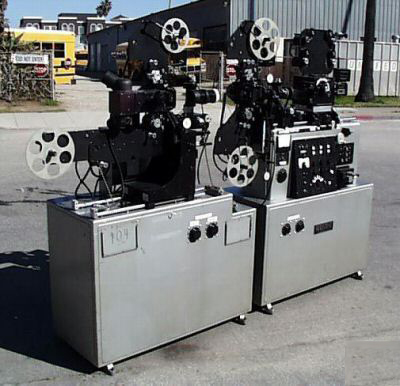
« L’Abominable » is in danger of being evicted and no solution has been found yet. Please support l’Abominable by signing a petition and spreading the word.
Click here to sign the petition
Why it is important to help « L’Abominable » as it is in danger of being evicted.
The industry of cinema, as we all know and increasingly experience, is « going digital. » After years of hype, digital projection of films in commercial cinemas in France and in Europe is spreading dramatically. Via a ricochet effect, the technical industries are feeling the sting of reduced orders for film prints as well as fewer films being shot on celluloid. Throughout the sector, restructuring and layoffs are rampant.
Yet at the same time, the interest of many contemporary artists express for analog film is symptomatic. From being a medium that was extensively used by an industry, analog film is becoming a medium specifically and consciously chosen by a number of filmmakers and artists for specific kinds of artistic expression. Could this be a temporary flare up of interest, colored by nostalgia? This is doubtful, considering the young age of some of these artists and the interest shown by artistic institutions in these new creations. Rather, it has to do with a shift, comparable to the one experienced by engraving at the end of the 19th century: a shift from the industrial scale to the more limited and precise activity of artistic creation.
But in order to create, these filmmakers and artists must be able to access the appropriate technical means. Along with the transformation of the commercial film industry comes the disappearance of the necessary machines, technical knowledge and services available to fringe productions. The American filmmaker James Benning, whom the Galerie Nationale du Jeu de Paume recently honored with a retrospective in Paris, is abandoning the film medium after having made more than 20 feature-length pieces between 1976 and 2010. The British artist Tacita Dean, whose 16mm works are exhibited in contemporary art museums and galleries all over the world, is being forced to give up printing her films in her own country, in the absence of a film lab willing to continue to offer this service. Many hundreds of other, lesser known artists and filmmakers are faced with the same difficulties.
At the same time, on the world scale and particularly over the last ten years, filmmakers have been organizing workshops with the very equipment the labs have abandoned, freeing themselves up from the industry in order to create their films, performances and installations using celluloid. France is particularly rich in these initiatives. These are grass-roots initiatives, often modest and not highly visible, but without them we may reasonably ask ourselves how filmmakers wishing to work on film will be able to produce work in ten or twenty years.
Among these, the non-profit organization « L’Abominable » in the suburbs of Paris, has been able to gather the energy, competence and equipment to offer an impressive range of techniques for the processing and the printing of Super-8, 16mm and 35mm film, as well as digital transfers to and from these formats. The association functions by apprenticeship: the filmmakers more proficient in the equipment teach others how to operate and use tools which were previously thought to be inaccessible and too complicated to be used by the general public. This do-it-yourself operation has yielded its fruit: more than 250 works have benefited from L’Abominable’s existence since its creation in 1996. Its activity and experience in this particular area, the wide range of services it offers and the quality of the works created with its assistance have given it an internationally recognized reputation and a particular importance within the network of artist-run film labs in Europe and abroad, even though its public funding remains minimal.
But all this was possible only because « L’Abominable » paid almost no rent. At a time when this organization is finding itself evicted from the inexpensive premises where it was created some 15 years ago, thereby threatening its very existence, public funding bodies must understand the contemporary issue that represents the passage of cinematographic tools away from the industry and into the hands of the artists themselves. While the digitalization of commercial cinemas is heavily funded, a structure such as L’Abominable must be given the means to survive this transition, in order to continue and develop its activities to the full potential of its technical tools and expertise it has assembled over the years through obstinate perseverance.
Asnières-sur-Seine, march 2011
Common web site of more than 20 artist-run film labs in the world:
www.filmlabs.org
Archive of the “dix ans de L’Abominable” program (2006-2007):
www.10ans.l-abominable.org
L’Abominable’s website:
www.l-abominable.org
